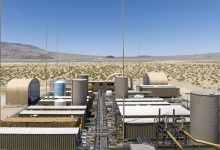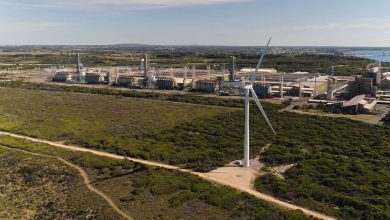Dusk of the Mining Industry in Romania: Moving Forward Without Coal
The new policy promoted by Brussels, under the Green Deal flag, also means the dusk of the coal mining industry in the European Union. Eliminating carbon emissions will force the states that still have coal production, including Romania, to come up with plans for the economic reconversion of mono-industrial basins. In our country, Jiu Valley still awaits solutions, after out of 14 mines that operated here before 1989, only four are still working, but they are also in process of winding-up. 530 mines and quarries have been closed over the past 30 years, while only three exploitation sites have been reopened. It’s about three mines in Jolotca perimeter, Harghita County, mines operated by Radioactiv Magurele, under the coordination of the Ministry of Economy, Energy and Business Environment, and where rare metals are exploited.
A 17-year old law
Currently, the law governing the mining activity is the Mining Law No. 85/2003, although over the years there have been several attempts to amend it. The document was drawn up at a time when Romania was still negotiating its accession to the European Union and in an unfavourable economic context. Although in that period, as today, the European and national trend was to drastically reduce the mining activity, the law does not address many of the problems generated by mine closure, does not regulate access to the abandoned reserves/resources, the procedures of closure, rehabilitation and greening of the affected areas and their correlation with the requirements of stakeholders (local communities, environmental authorities, water authorities etc.). On the other hand, the related legislation on environment, water and hazardous mining waste was subsequently promoted under the legislative acts that were often in conflict with Law No. 85/2003.
State aids for closure
The only state aid that is granted for coal is in accordance with the provisions of the European Council Decision No. 787/2010 on state aid to facilitate the closure of uncompetitive coal mines, following to carry out activities of closure of mining works and greening of the affected mining perimeters.
The Romanian state had initially notified the closure of three mining units in Jiu Valley. The state aid SA 33033 was authorized by European Commission Decision no. C (2012) 1020 final of 22 February 2012. Subsequently, this state aid was changed, by including two more mining units from Jiu Valley. The last change of the state aid was reauthorized by European Commission Decision no. C (2018) 1001 final of 16 February 2018.
The state aid for the closure of Petrila, Paroseni and Uricani coal mines is managed by Societatea Nationala de Inchideri Mine Valea Jiului S.A. (SNIMVJ), and the state aid for the closure of Lonea and Lupeni coal mines is managed by Complexul Energetic Hunedoara S.A. (CEH).
| Aids granted for the closure of coal mines | |
| Aid authorized under Decision C (2018) 1001 final (Period 2011-2024) | Thousand RON |
| Coverage of production losses for SNIMVJ (Article 3 of Council Decision 2010/787/EU) | 545,830 |
| Coverage of production losses for CEH (Article 3 of Council Decision 2010/787/EU) | 214,087 |
| Coverage of exceptional costs for SNIMVJ (Article 4 of Council Decision 2010/787/EU) | 369,615 |
| Coverage of exceptional costs for CEH (Article 4 of Council Decision 2010/787/EU) | 465.856 |
| Total: | 1,595,388 |
| Source: Integrated National Energy and Climate Plan 2021-2030 | |
In November 2019, Government adopted the Emergency Ordinance No. 69/2019 for the application of social protection measures granted to persons made redundant through collective redundancies made on the basis of redundancy plans by Societatea Natională de Inchideri Mine Valea Jiului S.A and Societatea Complexul Energetic Hunedoara S.A. during 2019-2024. The Ordinance provides for granting the monthly supplementary income, as a social protection measure that benefits the dismissed persons from the companies for which it was approved to grant state aid to facilitate the closure of non-competitive coal mines. As the mentioned companies are located in a mono-industrial region, these measures are necessary to mitigate the social impact of structural changes caused by the closure of uncompetitive coal mines in Jiu Valley, and thus to promote a fair transition, given the legislative policy of the Romanian state and the requirements of correlation with internal regulations and harmonization of national legislation. Therefore, by the end of 2021, the aid to be received by the persons made redundant will amount to RON 62,290,000, of which RON 24,723,000 will be paid in 2021.
Investments at Complexul Energetic Oltenia
With a production accounting for up to 25% of Romania’s electricity, Complexul Energetic Oltenia, the largest electricity producer of the country, will undergo an extensive restructuring and decarbonization process. The value of investments to be made here amounts to around RON 7.2bn and to this end a tender has already been launched to choose a company in order to draw up the ‘Study on preparing the Restructuring and Decarbonization Plan for 2020-2025 of CE Oltenia’. The following investments are envisaged:
- Construction of a photovoltaic park with an installed power of around 60 MW on the closed slag and ash deposits related to S.E. Rovinari;
- Construction of a photovoltaic park with an installed power of around 80 MW on the closed slag and ash deposits related to S.E. Turceni;
- Construction of a photovoltaic park with an installed power of around 75 MW on the closed slag and ash deposits related to S.E. Isalnita;
- Construction of a photovoltaic park with an installed power of around 95 MW on the inner tailings facility within Tismana quarry – E.M.C. Rosia – Rovinari;
- Construction of a gas-fired unit of 400 MW at S.E. Turceni;
- Construction of 2 gas-fired units of 400 MW at S.E. Isalnita;
- Rehabilitation and modernization of the small hydro-power station with an installed power of 9.9 MW at S.E. Turceni;
- Retrofitting/Modernization of the small hydro-power stations of 2 MW at S.E. Isalnita.
CupruMin is recovering
Several years ago, in danger of being wound-up, CupruMin Abrud managed to recover. Therefore, in the period 2016-2019 it doubled its key financial indicators. The company producing copper concentrate recorded an increase in revenues by 93%, in turnover by 120% and in profit by 117% in 2019 compared to 2016. CupruMin obtained these results through total investments of around EUR 30mln from own resources, in conditions in which the company has no debts, company officials claim.
“The company obtained the results in the mentioned period through total investments of RON +125mln (about EUR 30mln) targeted to increase productivity, efficiency and automation of specific technological processes. CupruMin invested exclusively from own resources, without bank loans. CupruMin has no debts,” reads a press release issued by the company.
The turnover of the company climbed from RON 119mln in 2016 to RON 262mln in 2019. In the mentioned period the profit followed the same upward trend and growth coefficient, from RON 6mln in 2016 to RON 15mln in 2019. Investments tripled from over RON 14mln in 2016 to over RON 52mln in the peak of 2018. Last year, investments amounted to over RON 40mln. Also, production evolved from 37,846 tons of copper concentrate (the equivalent of 7,800 tons of metallic copper) to 39,018 tons of concentrate in 2018 (8,200 tons of metallic copper), i.e. 43,500 tons of concentrate (9,180 tons of metallic copper) in 2019. In the future, CupruMin aims to develop new exploitation perimeters and integrate copper concentrate production in a chain that includes metallurgical processing and the manufacture of copper parts, necessary for components in the automotive or IT&C industries.
Vast Resources sells the first quantities of copper concentrate
Another company that is preparing to exploit copper in Romania is the British company Vast Resources. It announced in June that it expected to make the first sale of copper concentrate produced at the Baita Plai polymetallic mine at the end of August. Vast Resources announced on May 12 that the results of the metallurgical tests performed were better than initially expected. Vast Resources also owns in Romania, besides the Baita Plai mine, the Manaila polymetallic mine. Recently, the British company received the exploitation licenses for Carlibaba perimeter, adjacent to Manaila mine, Suceava County. The new license expands the exploitation area of the Manaila-Carlibaba project by 410%, from 27.2 hectares to 138.6 hectares.
“This would allow the creation of a larger mining and processing facility on the site and would eliminate the need for the costly ore transport to the current processing unit in Iacobeni, located at a distance of approximately 30 kilometers,” according to the company.
Vast Resources announced since 2017 that it planned to expand the exploration activity in Carlibaba perimeter, where it plans to develop a new polymetallic quarry and a related metallurgical processing unit, which will replace the Iacobeni facility and is expected to reduce operating costs by 25-30%. Carlibaba is connected to Manaila through a 2-kilometer underground tunnel. Also, near Manaila, Vast Resources owns two more concessions, namely Piciorul Zimbrului and Magura Neagra, where the presence of copper and gold deposits was identified. The company is considering new drilling works to confirm and evaluate the deposits, which could be transformed into a new source of ores for the future metallurgical complex. The company also owns a 29% stake in the Geamana-Coltii Lazarului perimeter, located near Baia de Aries and Rosia Montana, in the so-called ‘golden quadrilateral’ of the Apuseni Mountains.
Financing of USD 16.6mln for Euro Sun Mining
Euro Sun Mining, formerly Carpathian Gold, owner of the gold project in Romania, has recently attracted financing of CAD 22.32mln (USD 16.6mln), the funds being intended to explore and develop the mining projects of the company, including the one in Romania. In 2018, the Government of Romania completed the ratification of the license for the concession of the mining activity of exploitation of the gold and copper perimeter in Rovina, Hunedoara County. The license was granted by the National Agency for Mineral Resources (NAMR) in 2015, and at the time the value of mining production was estimated at USD 3.6bn for gold and USD 1.7bn for copper and the Romanian state was to receive royalties of USD 310.4mln. The gold deposit in Rovina, the second largest in Europe, contains measured and indicated resources of 204 tons of gold and over 635,000 tons of copper. The mine in Rovina is located 17 kilometres from the Certej mining concession, held by Canada’s Eldorado Gold, and approximately 50 kilometres from Rosia Montana, project which Gabriel Resources intended to develop.







